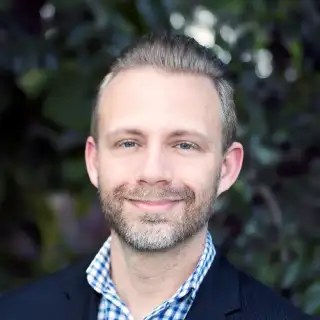Is $30k a Good Down Payment on a $300K House?

There’s a long-running myth that homebuyers need a 20% down payment to take out a mortgage. While there are advantages to putting such a substantial amount down, it's not a necessity. Lenders have loan options that allow you to buy a home with much less.
If you're shopping for a house in the $300k range, you may wonder if $30k – 10% of the purchase price – is a reasonable down payment.
The short answer is “yes” – having a $30k down payment on a $300k house should allow you to qualify for most types of loans. It may even be suitable as a down payment for a $400k home.
However, there's more to purchasing real estate than just making the down payment. You must also consider closing costs and their impact on your savings. Plus, you'll want (and may be required to have) some funds left over for unexpected expenses after you move in.
Closings Costs and Your Down Payment
There are fees and expenses associated with purchasing a home that you’ll be responsible for in addition to your down payment. If $30k is the total amount you have saved for your purchase, these closing costs could eat into how much you can put down.
While individual expenses will vary, some of the charges you can expect include:
Appraisal Costs
Processing/Underwriting Fees
Lender Points
Title Insurance
Escrow Services
And while they’re not technically closing costs, you’ll likely be required to fund up to six months of property taxes and a year or more of homeowners insurance premiums.
How Much Am I Looking At?
As a general estimate, you can expect to pay between 2% and 4% of your home’s purchase price in closing costs. A $300k house would equal between $6,000 and $12,000 due at closing. Your actual total, however, will depend on:
The home you are purchasing
The type of mortgage
The amount of your loan
Average costs in your area
Fees charged by your lender
So, if your $30,000 needs to cover closing costs, your actual available down payment would be between $18,000 and $24,000 – 6% to 8% of the price of a $300k house.
Potential Cash Allocations When Buying a Home: Example
Cash Available | $30,000 |
Estimated Closing Costs | -$8,000 |
Required Reserves or Voluntary Emergency Fund | -$4,500 |
Remaining for Down Payment | $17,500 (5.8% on $300k home) |
The Importance of Maintaining Reserves
The good news is that even if you have to pay closing costs out of your $30k, you should still have enough for a down payment on a $300k house with most lenders. However, if that's the entirety of your savings, you could run into trouble if you face a financial emergency after closing.
Some lenders, depending on the rest of your scenario, may require you to maintain extra funds in reserve. Plus, even if your mortgage program doesn't require them, having money left over can boost your chances of approval.
How Much Should I Keep in Reserve?
Lender requirements aside, the amount you should maintain in reserve will depend on your individual needs. But as a rule of thumb, putting aside two to six months of housing expenses should give you a cushion to fall back on until you can rebuild your savings.
The dollar amount this equates to will depend on numerous factors, most importantly your interest rate and actual down payment, but it will also be impacted by things like:
Local Taxes
Insurance Premiums
Community Association Dues
Say, for example, your all-inclusive monthly housing expenses total is $2,250. In this situation, two months of reserves would equal $4,500. Six months of reserve funds would be $13,500.
If the closing costs on a $300k house run 3% – $9,000, you'll be left with $21,000 for your down payment and reserves. Maintaining a two-month reserve in this scenario would allow you to put $16,500 towards your purchase price. That is still a 5.5% down payment and enough to secure a mortgage.
However, holding back six months of reserves would leave you with just $7,500 – 2.5% – for your down payment. Although you could still qualify for a VA or USDA loan (both of which allow for 0% down), you would not be eligible for a conventional mortgage (between 3% and 5% down) or an FHA loan (3.5% down).
Down Payment Assistance Programs to the Rescue
Want to stretch your $30k down payment even further? You may qualify for down payment and closing cost assistance through one of the nearly 1,700 down payment assistance (DPA) programs available across the United States.
Down payment assistance programs promote homeownership by helping buyers cover the upfront costs of purchasing property. With most loans, you can use DPA to settle a significant portion of your down payment and closing costs. In some scenarios, you may even be able to purchase a $300k house with zero out-of-pocket expense and keep your $30k entirely for reserves.
Plus, DPA isn’t just limited to conventional mortgages. You can also use assistance with government-backed loans through the FHA, VA, and USDA.
How Does Down Payment Assistance Work?
Down payment assistance programs typically provide between 2% and 5% of your home’s purchase price – $6,000 to $15,000 on a $300k house – although you may be eligible for more or less depending on the program you’re applying to.
There are multiple types of down payment assistance programs, including:
Grants with no repayment required
Second loans with no monthly payment (some are forgivable)
Second loans with regular monthly payments
Lender-funded hybrid programs
Where to Find Down Payment Assistance?
Although there are nationwide (generally through large lenders) and statewide DPA programs, most focus on a more limited geographic area. Some typical sources of down payment assistance include:
City and county government agencies
Non-profit organizations
Employers (employer-assisted housing)
Lenders (both nationwide companies and local credit unions/community banks)
Native American tribal agencies
Requirements for Down Payment Assistance
DPA requirements will vary based on the program you’re applying to. While most are limited to a fixed geographic area, you can also expect to encounter restrictions on income and past homeownership.
According to the Urban Institute, 72.7% of down payment assistance programs have maximum income limits, while 62% require applicants to be first-time homeowners. You may also find programs limited to certain professions, such as teachers, veterans, and first responders.
If you're worried your income may disqualify you from receiving down payment assistance, talk with a few different mortgage providers about your options. Lender-created DPA programs often have no income limits.
What’s the Minimum Down Payment for a $300k House?
We've covered how closing costs might affect your down payment and that having some funds left over to cover unexpected expenses after closing is a wise decision. So, while a $30k down payment on a $300k house is a decent amount, it's possible to purchase a home with less. You may not even need a down payment with some programs.
Mortgage Type | Down Payment (%) | Down Payment on $300k House ($) |
3%* | $9,000* | |
3.5% | $10,500 | |
VA Loan | 0% | $0 |
USDA Loan | 0% | $0 |
*Conventional 3% down loans require borrowers to be first-time homebuyers or meet maximum income limits. Borrowers not meeting these criteria must put down 5% ($15,000).
Benefits of Making a Larger Down Payment
Maybe you have $30k to put down on a $300k home but have already planned for closing costs and will still have some savings left over. In that case, a true 10% down payment will reduce the amount you need to finance, cutting your monthly payment and mortgage insurance premiums.
For example, if closing costs and reserves took up half of your $30k, your actual down payment would only be 5% – $15k.
Based on assumptions (detailed at the end of this article) for taxes, homeowners insurance, and mortgage insurance, and using an interest rate of 6.885% (the average on the Mortgage Research Network rate tracker at the time of writing) a buyer putting $15k down on a $300k home would have a total estimated monthly payment of $2,430. Mortgage insurance would account for $185 of that.
In that same scenario, a buyer putting the full $30k down would have an estimated monthly payment of $2,270, with mortgage insurance running just $125 due to increased equity and a reduced loan balance.
DPA With a $30k Down Payment
Even if you have a full $30k down payment for your $300k home, you may still qualify for various down payment assistance programs. These programs can further reduce your payment and mortgage insurance costs, making your home purchase even more affordable.
With the same assumptions as before, if you received 5% in down payment assistance for a total of $45,000 – 15% down – your estimated monthly payments would be just $2,105. Out of that figure, only about $50 would go towards mortgage insurance premiums.
Of course, this doesn’t account for any monthly payments that could be required on your down payment assistance.
Buying a $300k House With a $30k Down Payment
If you have a $30k down payment on a $300k house, you should be in an excellent position to apply for most types of mortgages. However, closing costs and a safety net of reserve funds could impact the actual total you have available to put down.
Luckily, in most cases, $30k should still be a sufficient down payment, even if you need to deduct other expenses from that amount. Applying for down payment assistance can help you stretch your funds even further. To find your best options, connect with a lender familiar with the DPA programs available in your area.
The monthly payment estimates in this article are calculated based on a 30-year conventional mortgage. Taxes are assumed to be 1% of the purchase price, homeowners insurance is assumed to be $125 per month, and mortgage insurance costs are based on MGIC premiums for a credit score of 700.




